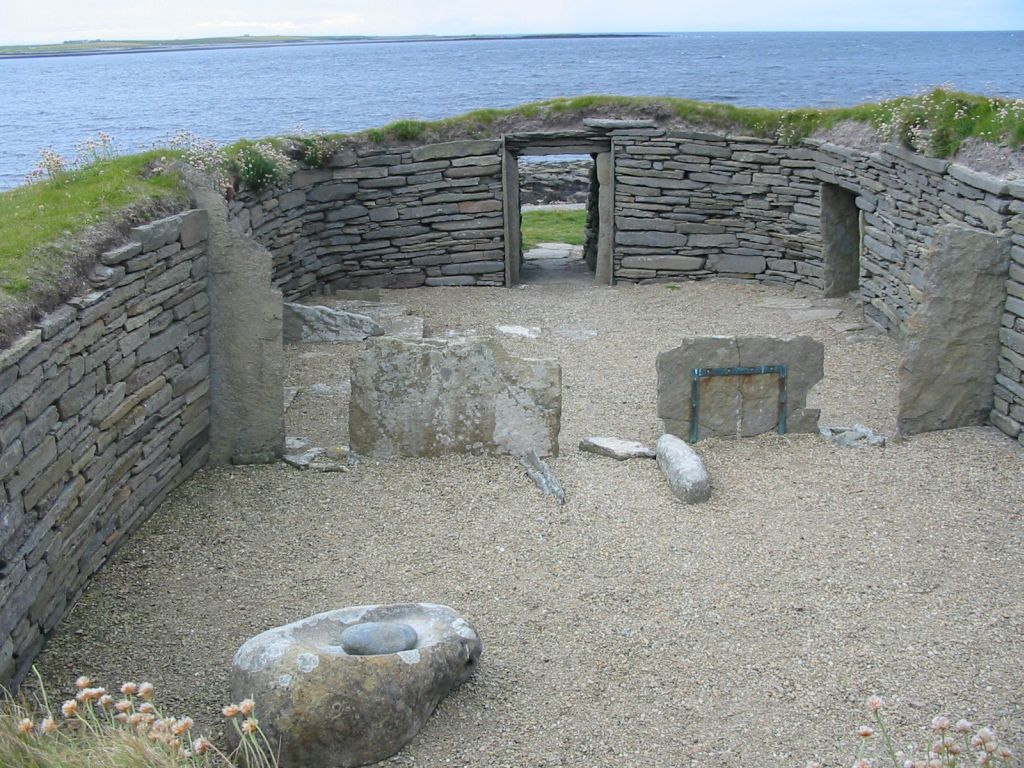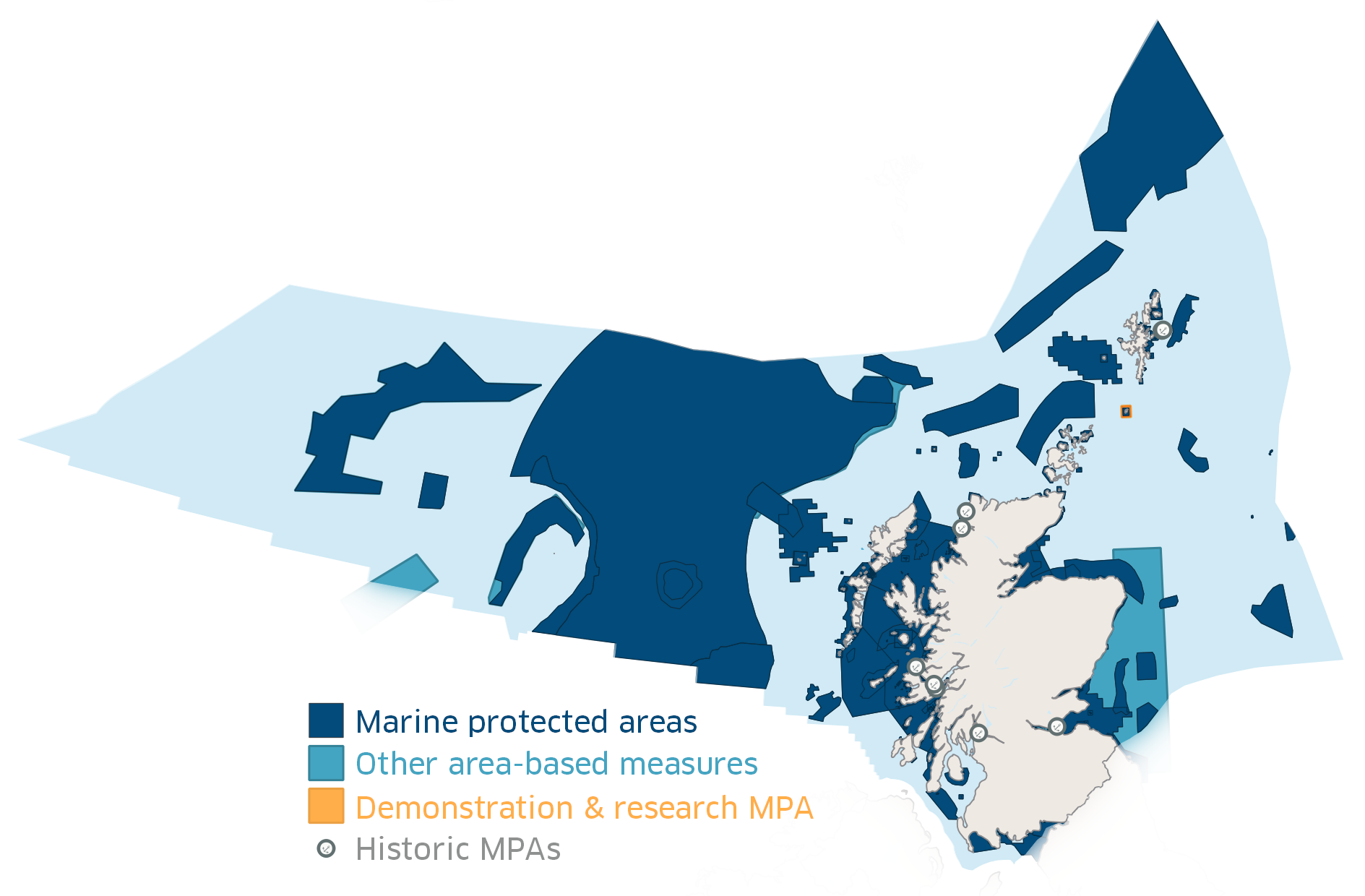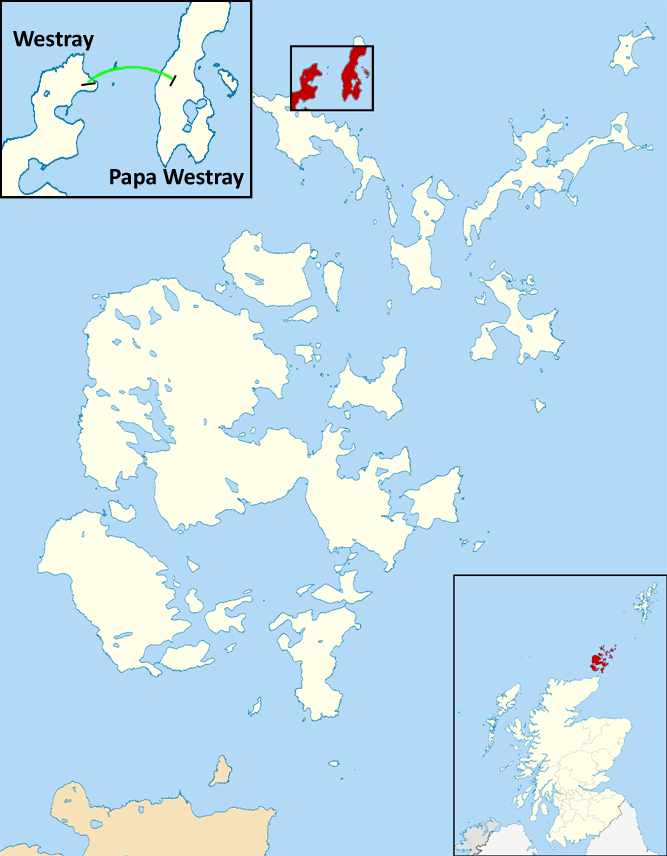|
Papa Westray
Papa Westray () ( sco, Papa Westree), also known as Papay, is one of the Orkney Islands in Scotland, United Kingdom. The fertile soilKeay, J. & Keay, J. (1994) ''Collins Encyclopaedia of Scotland''. London. HarperCollins. has long been a draw to the island. Attractions on the island include Holland House with an associated folk museum A folk museum is a museum that deals with folk culture and heritage. Such museums cover local life in rural communities. A folk museum typically displays historical objects that were used as part of the people's everyday lives. Examples of such ... and the Knap of Howar Neolithic farmstead run by Historic Scotland. It is the ninth largest of the Orkney Islands with an area of . The island's population was 90 as recorded by the United Kingdom Census 2011, 2011 census, an increase of over 35% since 2001 when there were only 65 usual residents. During the same period, List of Scottish islands, Scottish island populations as a whole grew by 4% ... [...More Info...] [...Related Items...] OR: [Wikipedia] [Google] [Baidu] |
Old Norse
Old Norse, Old Nordic, or Old Scandinavian, is a stage of development of North Germanic dialects before their final divergence into separate Nordic languages. Old Norse was spoken by inhabitants of Scandinavia and their overseas settlements and chronologically coincides with the Viking Age, the Christianization of Scandinavia and the consolidation of Scandinavian kingdoms from about the 7th to the 15th centuries. The Proto-Norse language developed into Old Norse by the 8th century, and Old Norse began to develop into the modern North Germanic languages in the mid-to-late 14th century, ending the language phase known as Old Norse. These dates, however, are not absolute, since written Old Norse is found well into the 15th century. Old Norse was divided into three dialects: ''Old West Norse'' or ''Old West Nordic'' (often referred to as ''Old Norse''), ''Old East Norse'' or ''Old East Nordic'', and '' Old Gutnish''. Old West Norse and Old East Norse formed a dialect ... [...More Info...] [...Related Items...] OR: [Wikipedia] [Google] [Baidu] |
Rapness
Rapness is a settlement on the island of Westray in Orkney, Scotland. The slipway is the ferry terminal for the Orkney Ferries crossing from Kirkwall on the Mainland of Orkney and to/from the nearby island of Papa Westray. The B9066 road runs from Rapness to Pierowall Pierowall is a village of Westray in the Orkney Islands, off the coast of the northern Scottish mainland. The village is the island's largest settlement and lies near its northern end, around Pierowall Bay. It has a variety of historical remai .... Notes Villages in Orkney Headlands of Scotland Landforms of Orkney Westray {{Scotland-geo-stub ... [...More Info...] [...Related Items...] OR: [Wikipedia] [Google] [Baidu] |
Holm Of Papa
The Holm of Papa (or Holm of Papay, Holm of Papa Westray and known locally as the Papay Holm,"Eyebrows link Westray figurine with burial chamber" Orkneyjar. Retrieved 1 April 2014.) is a very small in the Orkney Islands. It is around in size. It can be visited from its neighbouring island Papa Westray, or Papay, an island less than a hundred metres west of the Holm. The main sight on the small island i ... [...More Info...] [...Related Items...] OR: [Wikipedia] [Google] [Baidu] |
Black Guillemot
The black guillemot or tystie (''Cepphus grylle'') is a medium-sized seabird of the Alcidae family, native throughout northern Atlantic coasts and eastern North American coasts. It is resident in much of its range, but large populations from the high arctic migrate southwards in winter. The bird can be seen in and around its breeding habitat of rocky shores, cliffs and islands in single or smalls groups of pairs. They feed mainly by diving towards the sea floor feeding on fish, crustaceans or other benthic invertebrates. They are listed on the IUCN red list as a species of least concern. Both sexes have very similar appearances with black plumage and a large white patch on the upper side of their wings in summer. The bill is also black, being rather long and slender, while the feet are coral-red. In winter adult underparts are white and the upperparts are a pale grey with the back and shoulders exhibiting barred light grey and white patterning. The birds breed in solitary pairs ... [...More Info...] [...Related Items...] OR: [Wikipedia] [Google] [Baidu] |
Marine Protected Areas In Scotland
In Scotland, Marine Protected Areas (MPAs) are areas of sea defined so as to protect to habitats, wildlife, geology, undersea landforms, historic shipwrecks, and to demonstrate sustainable management of the sea. As of December 2020, approximately 37% of Scotland's seas are covered by the Scottish MPA network, which comprises 244 sites in total. Designation As of December 2020 Scotland's MPA network comprises 244 sites protected by a variety of different conservation designations, many of which are the same as those used on land, such as Special Protection Areas (SPA) and Sites of Special Scientific Interest (SSSI).Scottish MPA network - Parliamentary Report. p. 11.Scottish MPA network - Parliamentary Report. p. 32. This figure includes four sites designated in December 2020: North-east Lewis; Shiant East Bank; Sea of the Hebrides; and the Southern Trench. The legal framework for designating MPAs depends on the designation: for example SSSIs are designated under the Nature Cons ... [...More Info...] [...Related Items...] OR: [Wikipedia] [Google] [Baidu] |
Scottish Primrose
''Primula scotica'', commonly known as Scottish primrose, is a species of flowering plant in the family, Primulaceae, the primroses and their relatives. It was discovered by James Smith, and is endemic to the north coast of Scotland. Description ''Primula scotica'' is a low biennial plant with mealy stems and leaves. The leaves are broadest at the middle and are not toothed and form a low rosette. It has purple flowers with a yellow centre and the sepals are rounded and rather blunt. This plant is only a few centimetres tall, even when in full bloom. The flowers are small, being around in diameter and they have five heart-shaped purple petals with a bright yellow eye in the centre. Distribution ''Primula scotica'' is endemic to northern Scotland where it is found along the northern, Pentland Firth, coast of the mainland in the Highland (council area) in the former counties of Caithness and Sutherland and on the other side of the Pentland Firth in the Orkney Islands. A surv ... [...More Info...] [...Related Items...] OR: [Wikipedia] [Google] [Baidu] |
Great Auk
The great auk (''Pinguinus impennis'') is a species of flightless alcid that became extinct in the mid-19th century. It was the only modern species in the genus ''Pinguinus''. It is not closely related to the birds now known as penguins, which were discovered later by Europeans and so named by sailors because of their physical resemblance to the great auk. It bred on rocky, remote islands with easy access to the ocean and a plentiful food supply, a rarity in nature that provided only a few breeding sites for the great auks. When not breeding, they spent their time foraging in the waters of the North Atlantic, ranging as far south as northern Spain and along the coastlines of Canada, Greenland, Iceland, the Faroe Islands, Norway, Ireland, and Great Britain. The bird was tall and weighed about , making it the largest alcid to survive into the modern era, and the second-largest member of the alcid family overall (the prehistoric ''Miomancalla'' was larger). It had a black bac ... [...More Info...] [...Related Items...] OR: [Wikipedia] [Google] [Baidu] |
Arctic Skua
The parasitic jaeger (''Stercorarius parasiticus''), also known as the Arctic skua, Arctic jaeger or parasitic skua, is a seabird in the skua family Stercorariidae. It is a migratory species that breeds in Northern Scandinavia, Scotland, Iceland, Greenland, Northern Canada, Alaska, and Siberia and winters across the southern hemisphere. Kleptoparasitism is a major source of food for this species during migration and winter, and is where the name is derived from. Etymology The word "jaeger" is derived from the German word ''Jäger'', meaning "hunter". The English "skua" comes from the Faroese name ''skúgvur'' for the great skua, with the island of Skúvoy known for its colony of that bird. The general Faroese term for skuas is ''kjógvi'' . The genus name ''Stercorarius'' is Latin and means "of dung"; the food disgorged by other birds when pursued by skuas was once thought to be excrement. The specific ''parasiticus'' is from Latin and means "parasitic". Description Ide ... [...More Info...] [...Related Items...] OR: [Wikipedia] [Google] [Baidu] |
Arctic Tern
The Arctic tern (''Sterna paradisaea'') is a tern in the family Laridae. This bird has a circumpolar breeding distribution covering the Arctic and sub-Arctic regions of Europe (as far south as Brittany), Asia, and North America (as far south as Massachusetts). The species is strongly migratory, seeing two summers each year as it migrates along a convoluted route from its northern breeding grounds to the Antarctic coast for the southern summer and back again about six months later. Recent studies have shown average annual round-trip lengths of about for birds nesting in Iceland and Greenland and about for birds nesting in the Netherlands. These are by far the longest migrations known in the animal kingdom. The Arctic tern nests once every one to three years (depending on its mating cycle). Arctic terns are medium-sized birds. They have a length of and a wingspan of . They are mainly grey and white plumaged, with a red/orange beak and feet, white forehead, a black nape and ... [...More Info...] [...Related Items...] OR: [Wikipedia] [Google] [Baidu] |
RSPB
The Royal Society for the Protection of Birds (RSPB) is a charitable organisation registered in England and Wales and in Scotland. It was founded in 1889. It works to promote conservation and protection of birds and the wider environment through public awareness campaigns, petitions and through the operation of nature reserves throughout the United Kingdom. In 2020/21 the RSPB had an income of £117 million, 2,000 employees, 12,000 volunteers and 1.1 million members (including 195,000 youth members), making it one of the world's largest wildlife conservation organisations. The RSPB has many local groups and maintains 222 nature reserves. As founders, chief officers and presidents, women have been at the helm of the RSPB for over 85 years. History The origins of the RSPB lie with two groups of women, both formed in 1889: * The Plumage League was founded by Emily Williamson at her house in Didsbury, Manchester, as a protest group campaigning against the use of great cr ... [...More Info...] [...Related Items...] OR: [Wikipedia] [Google] [Baidu] |
Loganair Westray To Papa Westray Route
The Loganair Westray to Papa Westray route is the shortest scheduled passenger flight in the world. Flights on the route are scheduled for one and a half minutes, and actual flying time is closer to one minute. The record for the fastest flight is 53 seconds. The route is flown by Loganair, a Scottish regional airline that serves Scotland's Highlands and islands. It is also part of a connector flight that links the island of Westray and the town of Kirkwall, the central and most populous town of the Orkney Islands. Background The route between the Orkney Islands of Westray and Papa Westray in northern Scotland is a subsidised public service obligation. The Orkney Islands Council awards the route, along with several other routes throughout the islands, through a tendering process. The flights began in 1967, initially establishing the record for the world's shortest scheduled flights, and they have been continuously operated by Loganair. In 2013, the contract was again awarded ... [...More Info...] [...Related Items...] OR: [Wikipedia] [Google] [Baidu] |
Papa Westray Airport
Papa Westray Airport is located north of Kirkwall Airport on Papa Westray, Orkney Islands, Scotland. The facility is best known for being one of the two airports joined by the shortest scheduled flight in the world, a leg of Loganair's inter-island service, to Westray Airport. The distance is and the scheduled flight time, including taxiing Taxiing (rarely spelled taxying) is the movement of an aircraft on the ground, under its own power, in contrast to towing or pushback where the aircraft is moved by a tug. The aircraft usually moves on wheels, but the term also includes aircr ..., is two minutes. Papa Westray Aerodrome has a CAA Ordinary Licence (Number P542) that allows flights for the public transport of passengers and for flying instruction as authorised by the licensee (Orkney Islands Council). The aerodrome is not licensed for night use. Airline and destinations References External linksOrkney Islands Council* {{Airports in the United Kingdom Airp ... [...More Info...] [...Related Items...] OR: [Wikipedia] [Google] [Baidu] |





.jpg)



